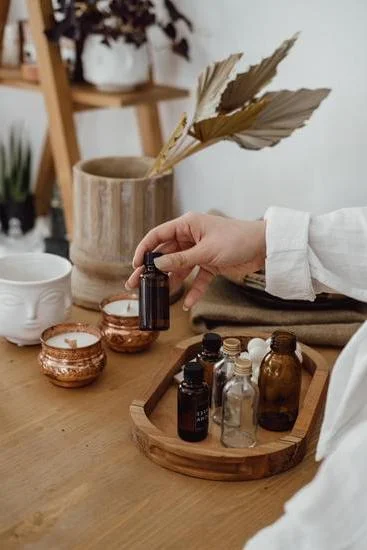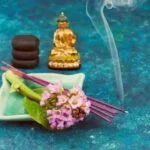Aromatherapy, a centuries-old practice, involves the use of essential oils for promoting physical and mental well-being. But how do you use aromatherapy essential oils effectively? In this article, we will explore the various methods and benefits of incorporating these oils into your daily life. Whether you are new to aromatherapy or looking to expand your knowledge, this comprehensive guide will provide you with everything you need to know.
Essential oils are highly concentrated extracts derived from plants, such as flowers, leaves, bark, and roots. These natural compounds capture the plant’s fragrant scent and possess therapeutic properties that can positively impact our physical and emotional health. Aromatherapy essential oils are used in diverse settings like spas, homes, and healthcare facilities.
So why should you consider using essential oils in your daily routine? Well, the benefits of aromatherapy are numerous. From reducing stress and anxiety to improving sleep quality and boosting mood, these oils have a wide range of therapeutic effects. They can also be used to alleviate minor ailments like headaches or muscle soreness. Moreover, aromatherapy offers an all-natural alternative to chemical-laden products for personal care or cleaning purposes.
In the following sections of this article, we will delve into the different types of essential oils available and their unique benefits. We will also discuss safety precautions and best practices for using them effectively without any harm. Additionally, you will discover various methods of utilizing aromatherapy essential oils: through diffusers, inhalation techniques, or topical application. So get ready to explore the world of aromatherapy and unlock the power of these incredible natural remedies.
Understanding Different Types of Essential Oils and Their Benefits
Aromatherapy is a holistic healing practice that uses natural plant extracts, known as essential oils, to promote physical and emotional well-being. These essential oils are highly concentrated liquids that capture the essence and aroma of various plants. Each type of essential oil possesses unique properties and benefits, making it important to understand the different types available and how they can be used.
There is a wide variety of essential oils, each derived from different plants and possessing its own distinct therapeutic qualities. Some popular types include lavender, peppermint, eucalyptus, tea tree, citrus oils (such as lemon or sweet orange), and many more. Lavender essential oil, for example, is renowned for its calming and relaxing properties, while peppermint oil is often used for its invigorating qualities.
Moreover, these essential oils offer an array of health benefits. They can be used to alleviate stress and anxiety, reduce inflammation and pain, enhance mental clarity and focus, boost immunity, improve sleep quality, uplift mood, relieve headaches or migraines, soothe digestive issues, among other advantages. It’s important to note that while most essential oils have multiple benefits due to their complex composition of chemicals compounds found in plants.
To utilize the benefits of essential oils effectively and safely during aromatherapy sessions or at home in daily life, it is key to understand the specific properties of each oil. This knowledge will allow you to choose the right type(s) based on the intended use or desired effect. Whether you are seeking relaxation after a stressful day or relief from certain symptoms or conditions, there is an essential oil suitable for your needs.
By familiarizing yourself with the various types of essential oils available along with their specific qualities and potential health benefits mentioned above (Section 7), you can better personalize your aromatherapy experience. Furthermore (Section 8), incorporating aromatherapy into your daily life can be a beneficial practice, bringing comfort and balance to your surroundings and self-care routines.
The next sections will explore the different methods of using essential oils as well as how to select the appropriate oil for your needs, ensuring that you maximize the benefits of aromatherapy in your own life.
Safety Precautions and Best Practices for Using Essential Oils
Aromatherapy can be a wonderful way to promote relaxation, improve mood, and enhance overall well-being. However, it is important to take certain safety precautions and follow best practices when using essential oils to ensure a safe and enjoyable experience.
First and foremost, it is crucial to remember that essential oils are highly concentrated substances. Therefore, they should never be applied directly to the skin without being diluted first. This is especially true for individuals with sensitive skin or those prone to allergies. To dilute an essential oil, mix a few drops with a carrier oil such as coconut oil or almond oil before applying it topically.
In addition to dilution, proper storage of essential oils is key in maintaining their efficacy and safety. Essential oils should be kept in dark glass bottles and stored in a cool, dry place away from direct sunlight or heat sources. Proper storage not only helps preserve the potency of the oils but also minimizes the risk of accidental spills or exposure to children or pets.
It’s also worth noting that some essential oils can interact with medications or medical conditions. For example, certain oils may have blood-thinning properties or stimulate contractions, so they should not be used by individuals taking anticoagulant medications or pregnant women without consulting with a healthcare professional first. It is always advisable to conduct thorough research on any potential contraindications before using essential oils.
| Safety Precautions | Best Practices |
|---|---|
| Dilute essential oils before applying topically. | Store essential oils in dark glass bottles in a cool, dry place. |
| Conduct thorough research on potential contraindications. | Keep essential oils out of reach of children and pets. |
| Avoid ingesting essential oils without professional guidance. | Patch test diluted oils on a small area of skin before widespread use. |
Top Methods of Using Aromatherapy Essential Oils
Aromatherapy essential oils can be used in various ways to experience their therapeutic benefits. Here are the top methods of using aromatherapy essential oils: diffusers, inhalation, and topical application.
Diffusers
One popular method of using aromatherapy essential oils is through diffusers. Diffusers disperse the oils into the air in a fine mist, allowing you to breathe in the soothing scent. There are different types of diffusers available, including ultrasonic diffusers, nebulizing diffusers, and heat diffusers.
Ultrasonic diffusers use water and electronic frequencies to create a fine mist that carries the essential oil particles into the air. They are easy to use and often come with adjustable settings for time and intensity. Nebulizing diffusers, on the other hand, do not require water and directly disperse undiluted essential oil particles into the air.
They are a great choice if you want a stronger aroma. Heat diffusers use heat to vaporize the essential oil and release its aroma into the air.
Inhalation
Another common method of using aromatherapy essential oils is through inhalation. Inhalation involves directly breathing in the scent of the oils to promote relaxation and well-being. There are several ways to practice inhalation:
- Steam Inhalation: Add a few drops of your chosen essential oil to a bowl of hot water. Place your face over the bowl, covering your head with a towel to trap in the steam. Breathe deeply for several minutes.
- Direct Inhalation: Apply a small amount (1-2 drops) of essential oil onto a tissue or cotton ball. Hold it close to your nose and inhale deeply.
Inhalation is ideal for quickly experiencing the effects of essential oils as they can directly impact your olfactory system and trigger emotional responses within seconds.
Topical Application
Topical application involves applying essential oils directly to the skin. However, it is important to note that essential oils are highly concentrated and should never be applied undiluted. They should always be diluted with a carrier oil such as jojoba oil, coconut oil, or almond oil.
To use essential oils topically, start by diluting them in a suitable carrier oil at a safe concentration. The typical ratio is 2-3 drops of essential oil per teaspoon of carrier oil. Apply the mixture to the desired area, such as the temples, wrists, or bottoms of the feet. You can also incorporate essential oils into massage oils for a relaxing and therapeutic experience.
When using aromatherapy essential oils topically, it is important to perform a patch test on a small area of your skin before widespread use to ensure you don’t have any adverse reactions.
By incorporating these top methods of using aromatherapy essential oils into your wellness routine, you can harness their natural benefits and promote overall well-being. Whether you prefer diffusers, inhalation techniques, or topical application, find a method that works best for you and enjoy the power of aromatherapy in your daily life.
How to Choose the Right Essential Oil for Your Needs
Choosing the right essential oil for your needs is an important step in using aromatherapy effectively. There are hundreds of different essential oils available, each with its own unique properties and benefits. In this section, we will provide some guidelines to help you navigate the vast array of options and choose the essential oil that best suits your specific needs.
Firstly, it’s important to identify the purpose or desired effect of using aromatherapy. Are you looking to relax and unwind? Or perhaps you’re seeking relief from a specific ailment or condition. Whatever your goal may be, there is likely an essential oil that can help.
Next, familiarize yourself with the different scent profiles and therapeutic properties of various essential oils. For example, lavender is renowned for its calming effects and ability to promote sleep, while peppermint is invigorating and can provide relief from headaches or nausea. Eucalyptus, on the other hand, is commonly used for respiratory support.
Consider any personal preferences or sensitivities you may have when selecting an essential oil. Some scents may be more appealing to you than others, so trust your intuition and choose an oil that resonates with you.
Lastly, do some research and read reviews about different brands and sources of essential oils. It’s important to choose high-quality oils that are pure and free from additives or synthetic fragrances. Look for reputable suppliers that provide detailed information about their sourcing methods and testing procedures.
By following these guidelines and taking the time to select the right essential oil for your needs, you can enhance your aromatherapy experience and maximize its therapeutic benefits.
| Essential Oil | Primary Benefits |
|---|---|
| Lavender | Calming, promotes sleep |
| Peppermint | Invigorating, relieves headaches and nausea |
| Eucalyptus | Respiratory support |
DIY Aromatherapy Recipes
Aromatherapy is a wonderful way to harness the power of essential oils for various purposes such as relaxation, stress relief, and promoting overall well-being. One of the key aspects of aromatherapy is creating your own blends and mixes of essential oils to suit your specific needs and preferences. In this section, we will explore the art of DIY aromatherapy recipes and provide you with some guidelines on blending and mixing essential oils.
Understanding Essential Oil Notes
When it comes to creating your own aromatic blends, it’s important to have a basic understanding of essential oil notes. Essential oils are divided into three categories: top notes, middle notes, and base notes. Each note has its own characteristic properties and contributes to the overall aroma and therapeutic effects of the blend. Top notes are light, fresh, and uplifting, middle notes are balancing and harmonizing, while base notes are deep, grounding, and long-lasting.
Methods for Blending Essential Oils
There are several methods you can use to blend essential oils together. One popular method is called “drop blending.” Start by selecting your desired oils based on their therapeutic properties and complementary scents. Place a tissue or cotton ball in front of you and add one drop of each oil onto the tissue. Cup your hands around the tissue to release the aroma and assess how well the scents blend together.
Another method is called “equal parts blending.” This involves using equal amounts (usually 10 drops) of each essential oil in your recipe. For instance, if you want to create a calming blend using lavender, chamomile, and geranium essential oils, you would add 10 drops of each oil into a bottle or container. Mix gently by rolling between your palms or swirling the container.
Testing Your Blend
Once you have created your DIY aromatherapy blend, it’s important to test it before using it on a larger scale. Apply a small amount of the blend onto your wrist or forearm and observe any potential allergic reactions, skin irritations, or sensitivities. It’s recommended to wait at least 24 hours before applying the blend to a larger area of the body.
By experimenting with various essential oils and blending techniques, you can create unique aromatherapy recipes tailored to your specific needs and preferences. Have fun exploring different scents, experimenting with various combinations, and discovering the therapeutic benefits of your own handmade blends. Remember to always use high-quality essential oils from reputable sources and consult with a certified aromatherapist if you have any concerns or questions.
Exploring the Benefits of Specific Essential Oils
When it comes to aromatherapy essential oils, there are a wide variety of options available. Each type of oil has its own unique properties and benefits. In this section, we will explore three popular essential oils: lavender, peppermint, and eucalyptus.
Lavender essential oil is known for its calming and soothing effects. It has been used for centuries to promote relaxation and relieve stress. Many people find that the aroma of lavender helps them fall asleep faster and improves the quality of their sleep. Additionally, lavender oil can also be used topically to reduce inflammation and alleviate skin irritations such as sunburns or bug bites.
Peppermint essential oil is often associated with its refreshing scent and cooling sensation. This oil is widely used for digestive issues such as indigestion, nausea, and bloating. Its antimicrobial properties make it an effective remedy for respiratory problems like congestion or sinusitis. When applied topically, peppermint oil can provide relief from tension headaches or muscle pain due to its menthol content.
Eucalyptus essential oil is commonly used for its respiratory benefits. It has a strong aroma that helps to clear airways and relieve congestion caused by colds or allergies. Eucalyptus oil is often included in chest rubs or inhalers for respiratory support. Apart from its respiratory advantages, eucalyptus oil also has antibacterial properties that can aid in wound healing when applied topically.
Incorporating Aromatherapy in Daily Life
Aromatherapy can be easily incorporated into your daily life to promote relaxation, boost mood, and support overall well-being. Whether you are at home, in the office, or looking for some self-care rituals, there are various ways to enjoy the benefits of aromatherapy essential oils.
At home, you can create a calming and inviting atmosphere by using essential oils in a diffuser. A diffuser disperses the aroma of the essential oil into the air, filling your space with a pleasant scent. You can choose oils such as lavender or chamomile to create a calming environment that is perfect for winding down after a long day. For an uplifting and energizing atmosphere, citrus oils like lemon or orange can be used.
In the office, where stress and tension can often build up, aromatherapy can help create a more productive and enjoyable work environment. Use a personal inhaler or apply a few drops of essential oil to a handkerchief or tissue and inhale deeply whenever you need to regain focus or boost your mood. Peppermint, rosemary, and eucalyptus oils are particularly known for their stimulating properties that can enhance alertness and concentration.
As part of self-care rituals, incorporating aromatherapy essential oils into your daily routine can be incredibly beneficial. For example, you can add a few drops of your favorite essential oil to your bathwater for a luxurious and relaxing experience. Alternatively, you can dilute it with carrier oil like almond or jojoba oil and use it for massage therapy to alleviate muscle tension and promote relaxation.
By incorporating aromatherapy into your daily life at home, office and as part of self-care rituals,you will find yourself reaping the soothing benefits that essential oils offer.
Concluding Remarks
In conclusion, the power of aromatherapy essential oils should not be underestimated. Aromatherapy is a holistic practice that has been used for centuries to promote physical and mental well-being. By harnessing the natural properties of essential oils, individuals can experience a wide range of benefits, from stress relief to improved sleep quality.
Throughout this article, we have explored the various aspects of aromatherapy and how to use essential oils effectively. We have learned about the different types of essential oils and their specific benefits, as well as safety precautions and best practices for usage. It is crucial to remember that essential oils are highly concentrated substances and should be handled with care.
We have also discussed the top methods of using aromatherapy essential oils, such as utilizing diffusers, inhalation, and topical application. These methods allow for easy incorporation of aromatherapy into daily life, whether it be at home or in the office. Additionally, we have delved into DIY recipes for blending and mixing essential oils, providing an opportunity for individuals to create customized oil blends tailored to their needs.
The benefits of specific essential oils such as lavender, peppermint, and eucalyptus have also been explored in detail, highlighting their unique therapeutic properties. It is important to note that individual preferences may vary when it comes to selecting the right essential oil. Experimentation is key in finding the perfect fit for one’s personal needs.
Finally, incorporating aromatherapy into daily life through home rituals, office settings, or self-care practices can greatly enhance overall well-being. Whether it’s creating a calming atmosphere at home or boosting productivity in the workplace, aromatherapy offers endless possibilities for improving our physical and mental state.
Frequently Asked Questions
What Is the Best Way to Use Aromatherapy?
The best way to use aromatherapy is to first identify your specific needs or goals. Are you looking to improve sleep, reduce stress, or relieve pain? Once you know what you want to achieve, you can choose the appropriate essential oils.
Aromatherapy can be experienced through inhalation, either by using a diffuser or adding a few drops of oil to a tissue and inhaling deeply. Another method is topical application, where diluted essential oils are applied directly to the skin through massage or added to products like lotions or bath salts. Finally, you can also add essential oils to your bathwater for a relaxing and aromatic soak.
What Are the 3 Ways Essential Oils Can Be Used?
There are three main ways in which essential oils can be used: inhalation, topical application, and ingestion (though ingestion should only be done under the guidance of a qualified professional). Inhalation involves breathing in the scent of the essential oil, which can help promote relaxation, improve mood, and support respiratory health. Topical application involves applying diluted essential oils directly to the skin, typically through massage or as part of skincare products.
This method is popular for its therapeutic benefits like pain relief and skin rejuvenation. However, it’s important to remember that some essential oils may be irritating to the skin if not properly diluted or used in large amounts.
Where Do You Put Aromatherapy Oils?
Aromatherapy oils can be applied in various locations depending on your desired effect. For inhalation purposes, placing a few drops in a diffuser is an effective way to disperse the fragrance throughout a room and create a calming ambiance. When it comes to topical application on the body, it’s generally recommended to apply diluted essential oils on pulse points such as wrists, temples, or behind the ears since these areas generate heat and help enhance diffusion.
Additionally, you can also mix them into carrier oils (such as jojoba or coconut oil) before applying onto larger areas of skin during massages or blending with skincare products. Ultimately, the specific location will depend on the purpose of the aromatherapy treatment and personal preference.

Are you looking for a natural way to improve your health and wellbeing?
If so, aromatherapy may be the answer for you.





